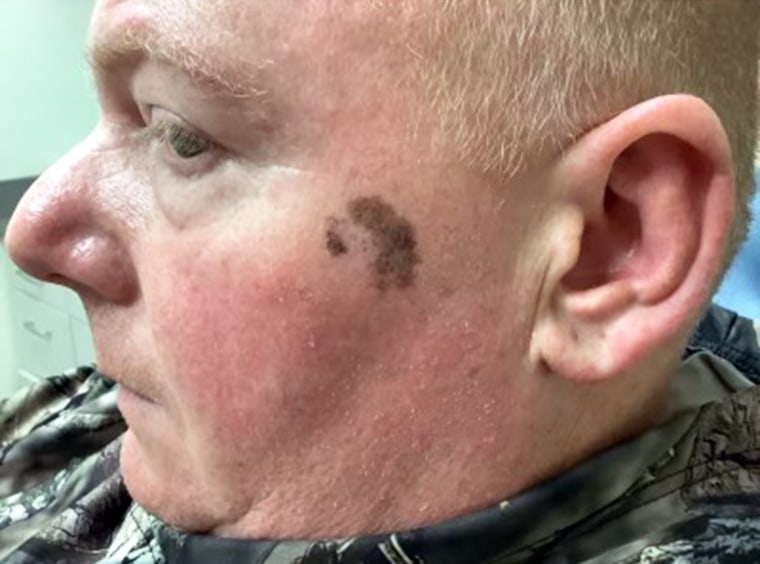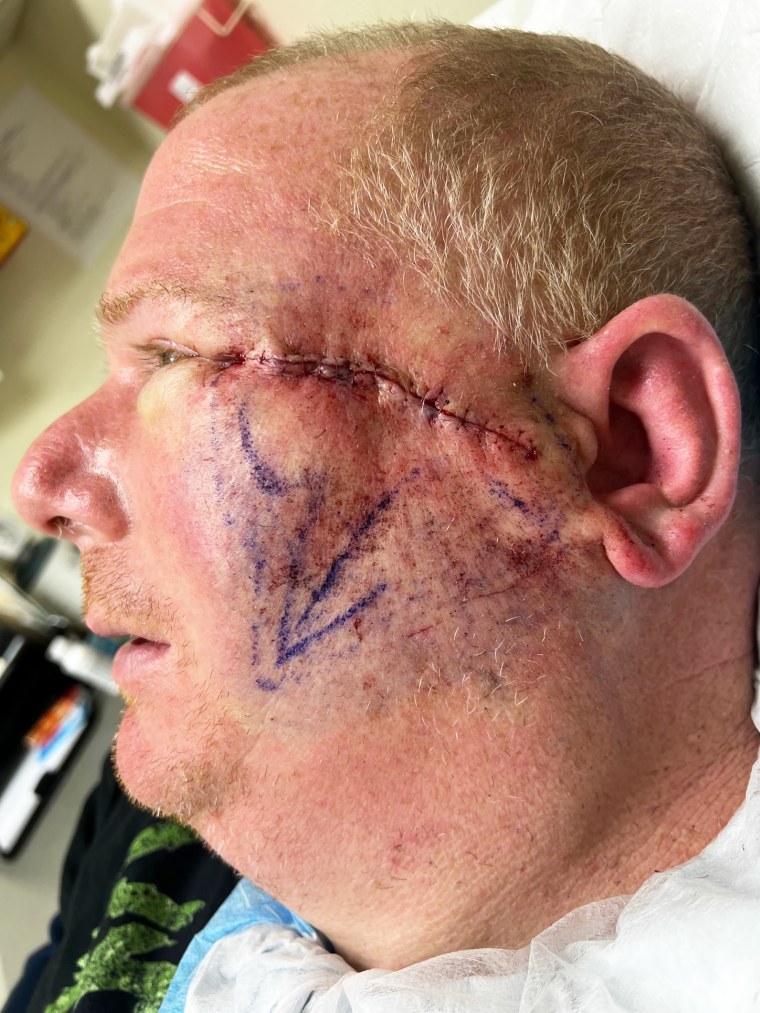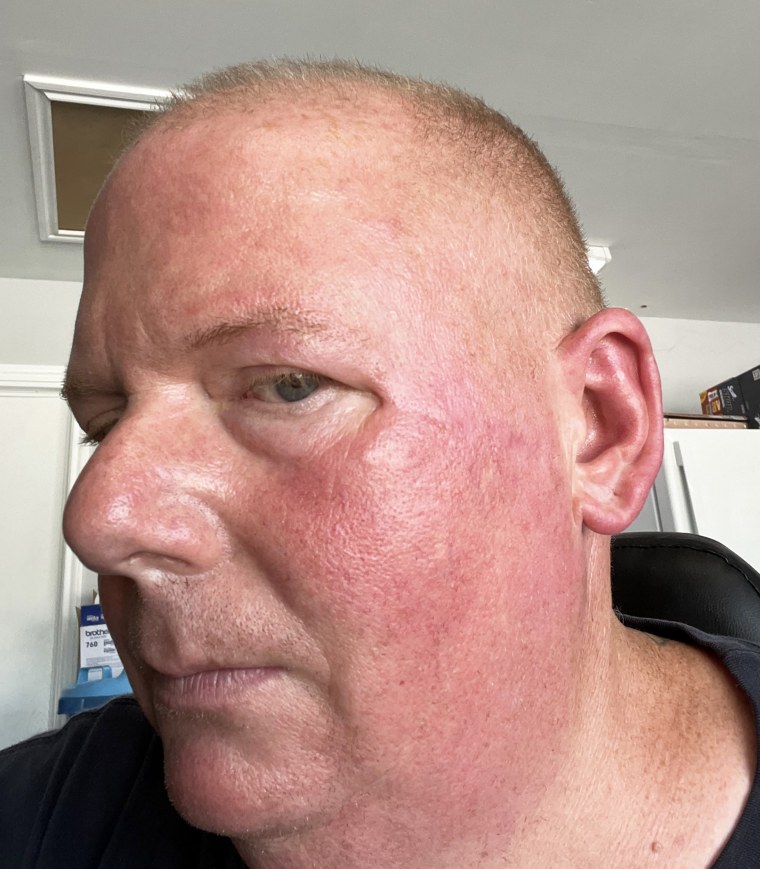Chris Meffen was zipping through the Texas countryside on the North Pole Flyer, a Christmas-themed train ride, with his family last November when another passenger approached him out of the blue.
The stranger pointed to a large dark spot on his cheek and asked if he had ever had it examined by a doctor.
It’s a question that may have saved his life, Meffen says, because it ultimately led to a diagnosis of melanoma, the deadliest form of skin cancer.

“I think that God was looking out for me,” Meffen, 46, who lives in Elgin, Texas, tells TODAY.com.
“I’m forever grateful for her.”
She is Dr. Chelsey Straight, a dermatologist in Austin, Texas, who happened to be on the same train with her family just after Thanksgiving 2022 and sat near Meffen.
Straight’s husband is a dermatologist, too, and he’s the one who first spotted the mole of Meffen’s left cheek and alerted her to it, she recalls. As skin doctors, they routinely notice people’s skin conditions when they’re out and about.
As Straight took a quick look at the stranger’s face, she thought the spot had some ominous features.
“It looked worrisome to me because it was large, had irregular borders and dark color. That’s concerning for melanoma. It looked much larger than any benign lesion should,” Straight tells TODAY.com.
“The other concerning thing was that he didn’t have any other lesions elsewhere that I could see on his face. ... Sometimes we look for the ugly duckling sign, where it’s just one big spot that doesn’t blend in with anything else.”
So as the train ride was coming to an end, Straight went up to Meffen, introduced herself, shared her concerns and told him it would be important to have the mole examined.
Meffen had actually been concerned about the spot, too.
“But I figured I would deal with it when the time came and, well, that time was when Dr. Straight spoke to me,” he says.
“My wife was listening in on the conversation (and said), ‘I’ve been telling you for how many years to get that looked at.’”

Melanoma warning signs
Meffen — an avid outdoors person who’s also had a lot of sun exposure through jobs in construction and groundskeeping — first noticed the lesion in 2017. It got bigger over the years, but he probably would have continued ignoring it if he hadn’t met Straight, he says.
He became Straight’s patient in December 2022, when she performed a biopsy and removed as much of the spot as possible from the surface of his skin. The pathology report confirmed it was melanoma in situ, also called stage 0, which is early stage and hasn’t grown deeper than the top layer of the skin, according to the American Cancer Society.
Meffen then had to come back twice for a staged excision to remove more skin to make sure all of the cancer was gone. The repair of the resulting wound was a separate procedure. Everything was completed by the second week of December.

Melanoma is more common on the face than most people realize and trickier to treat there because of scarring concerns in such a cosmetically-sensitive area, Straight says.
“The head and neck get a lot of sun exposure over the course of a lifetime,” she points out. “(But) melanoma can happen pretty much anywhere people have skin.”
It’s important to watch for the ABCDEs of melanoma — warning signs that a mole is cancerous — and check spots for asymmetry, border, color, diameter and evolution. Dermatologists also urge people to become familiar with their moles and let their doctors know if any spot starts changing, itching or bleeding.
Pay attention to a mole that doesn’t look like any of the others on your body, or is the lone mole on an otherwise spot-free part of your anatomy. This is the ugly duckling sign.
“A lot of people have moles that look sort of scary, but they’ve got 20 of them on their arm or their back,” Dr. Debra Wattenberg, a New York dermatologist, previously told TODAY.com.
“And then they have one that’s totally different looking. Usually, it’s the ‘ugly duckling’ — the one that stands out — that’s problematic.”
Since Meffen’s skin cancer was caught at an early stage, he didn’t require any treatment beyond the skin removal.
Six months after the surgery, his scar has faded to the point where it’s barely visible.

Both he and his dermatologist keep thinking about that chance encounter on the Christmas-themed train ride.
“It’s definitely not what any of us expected when we boarded that train that day. But I’m really glad my husband and I were in the right place at the right time and able to help Mr. Meffen,” Straight says.
